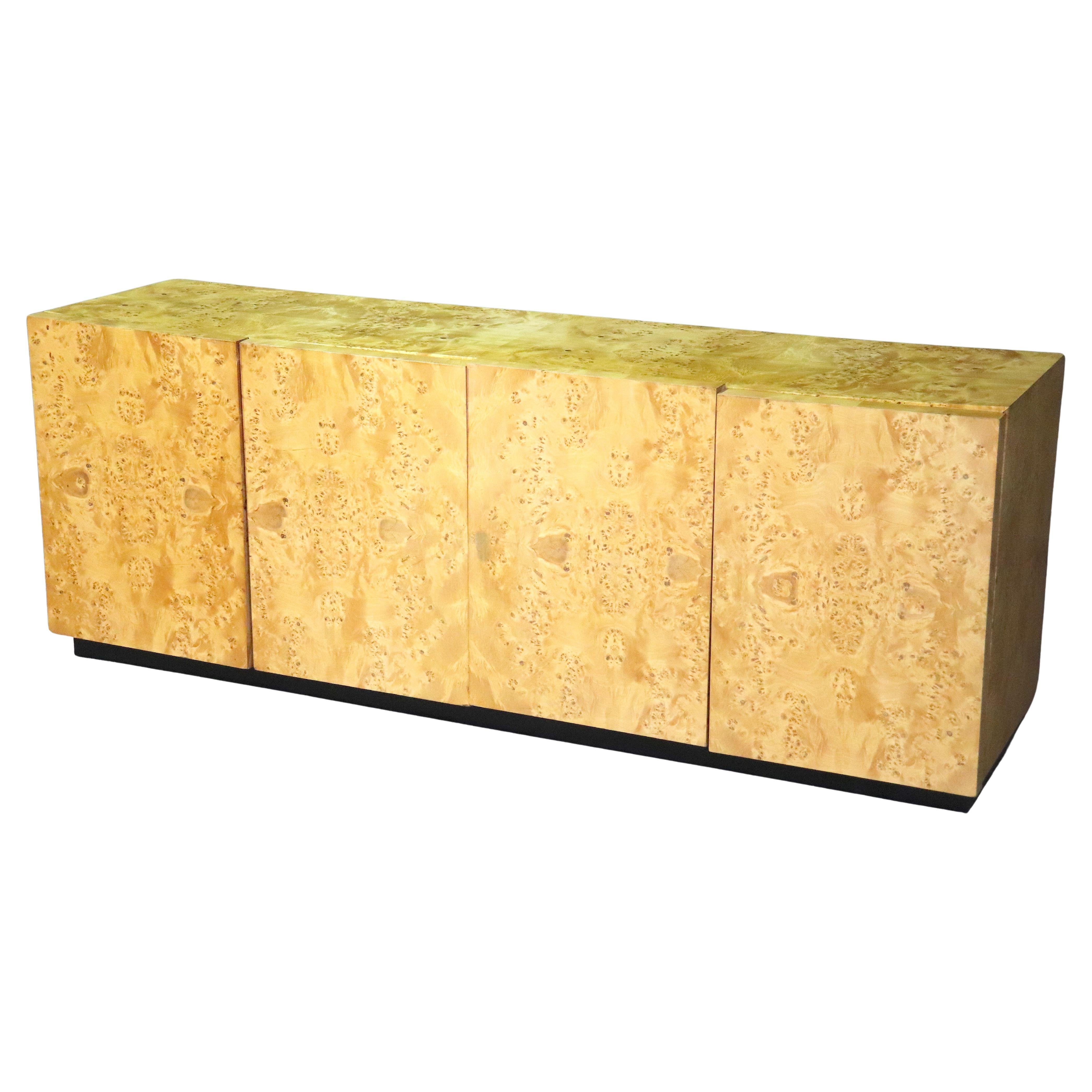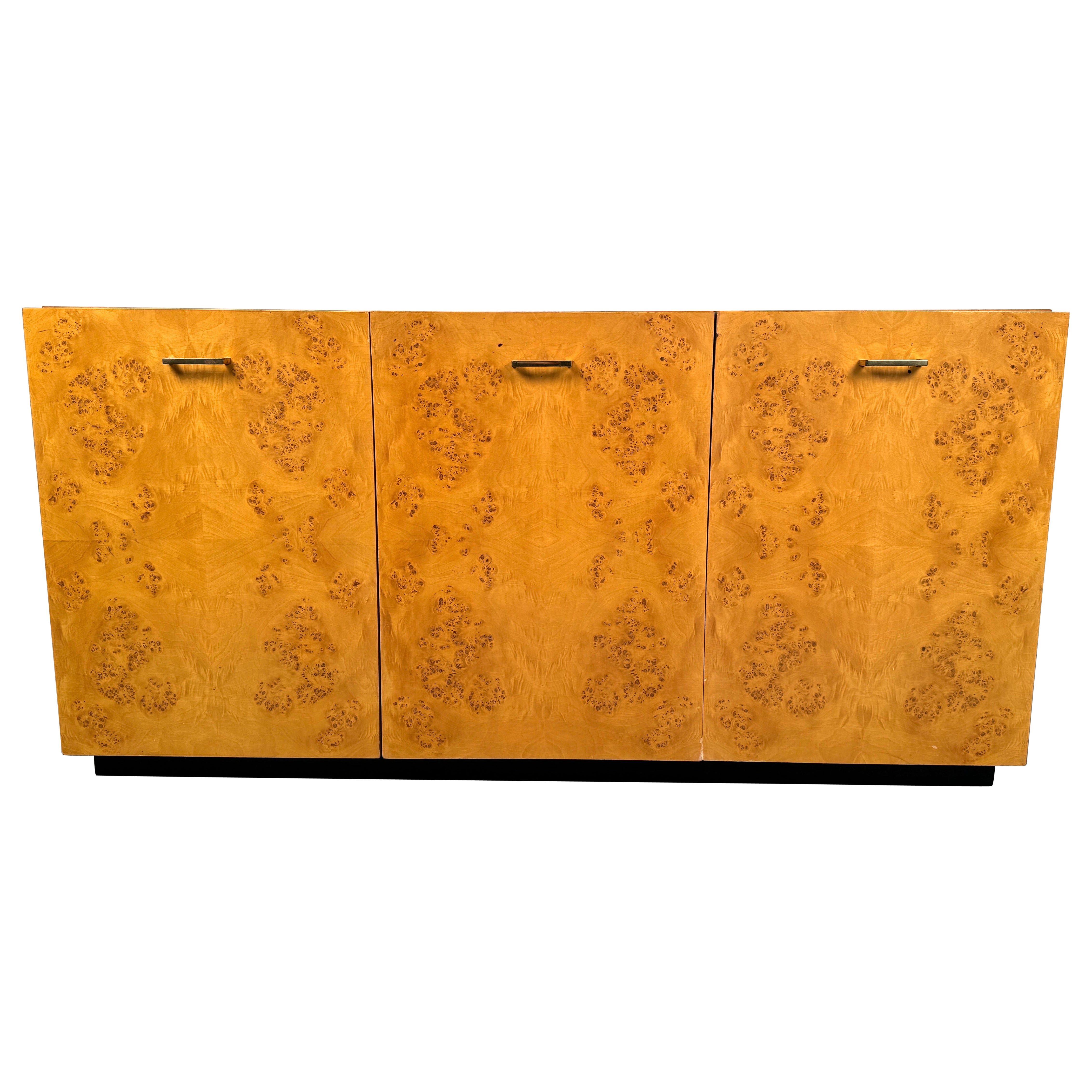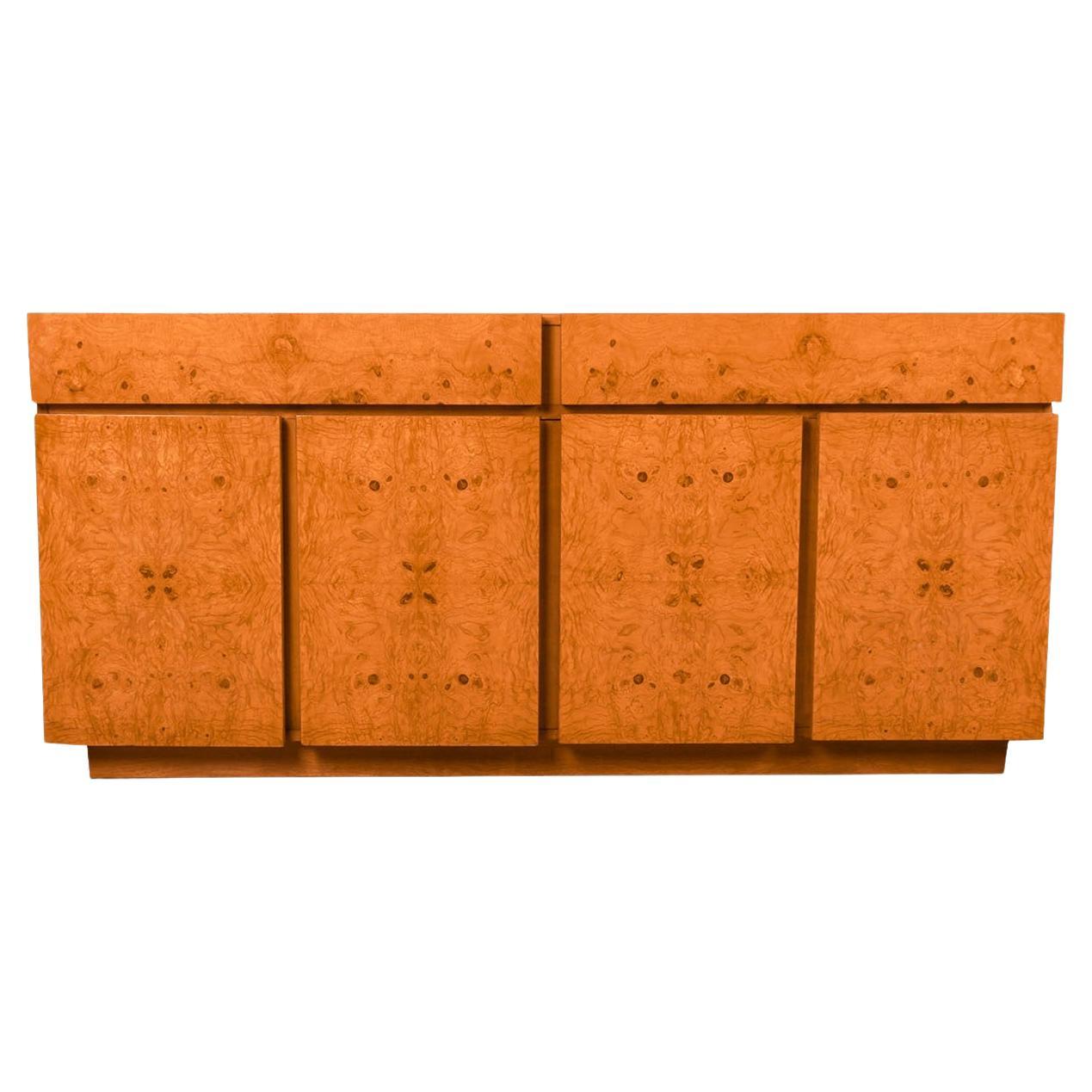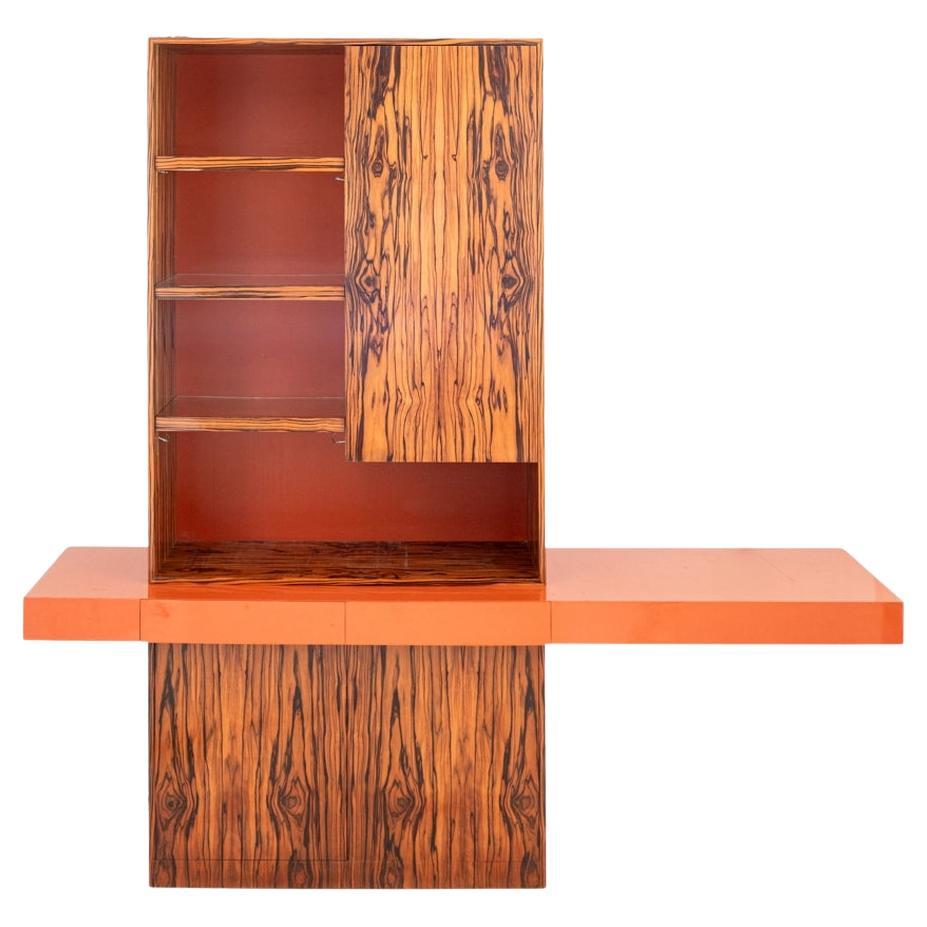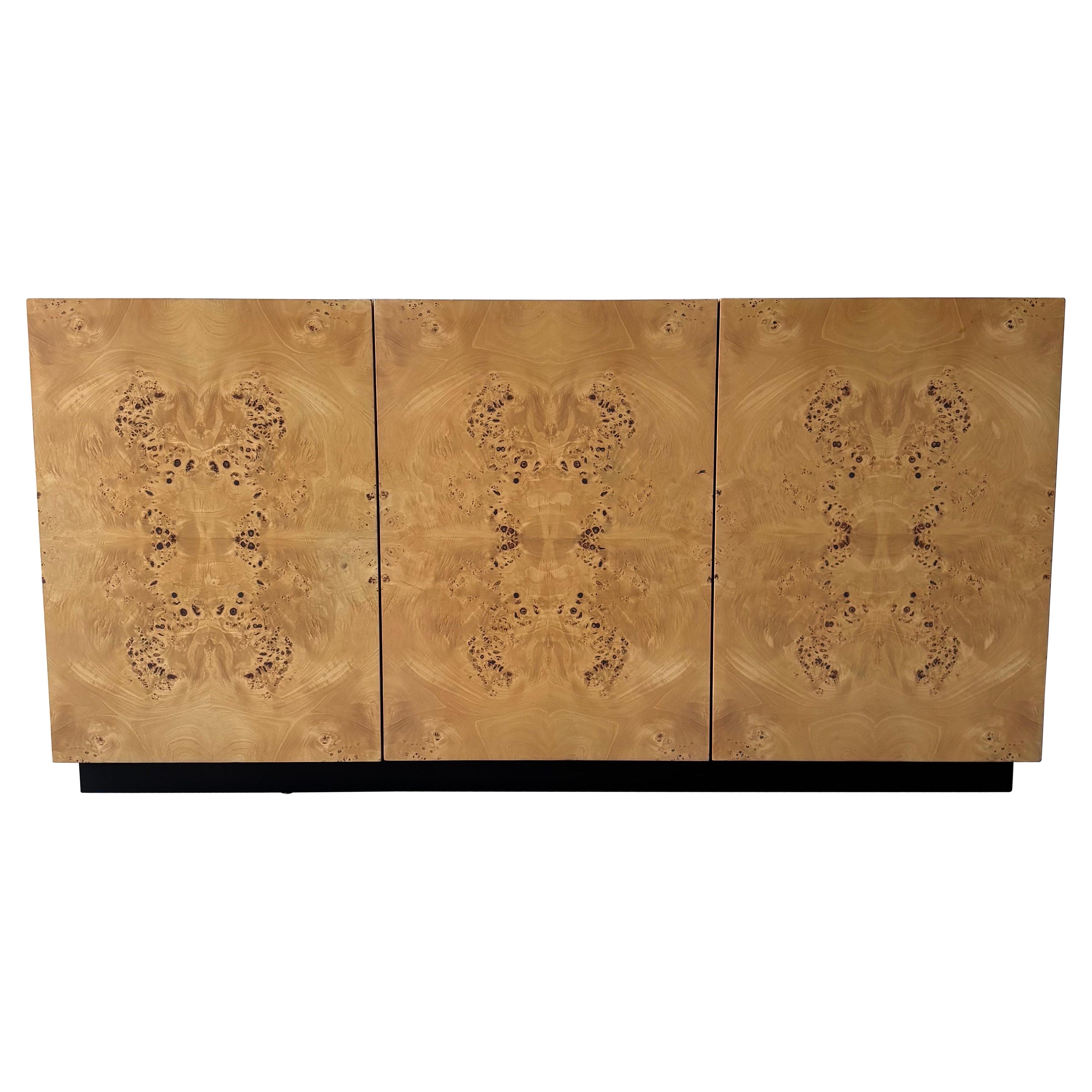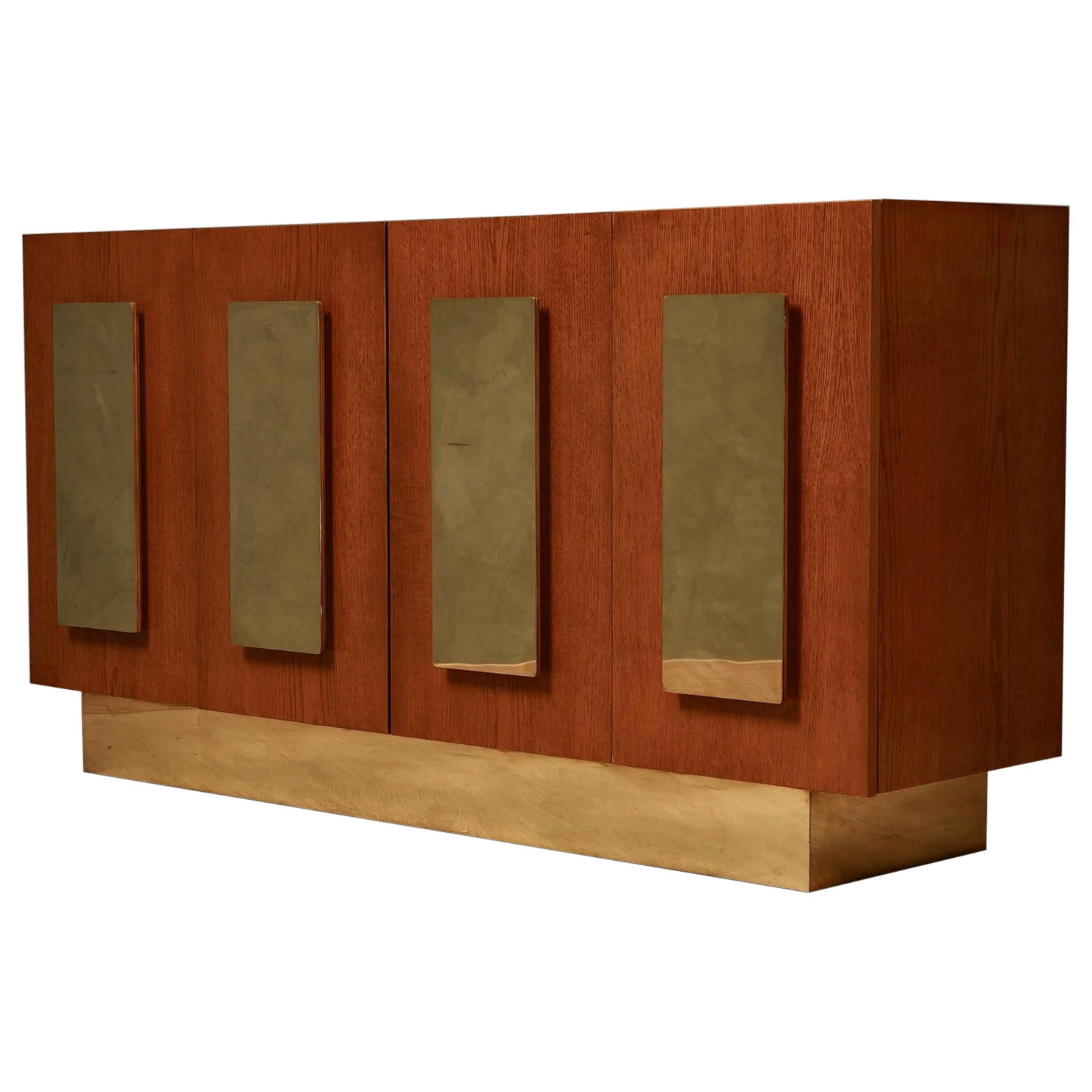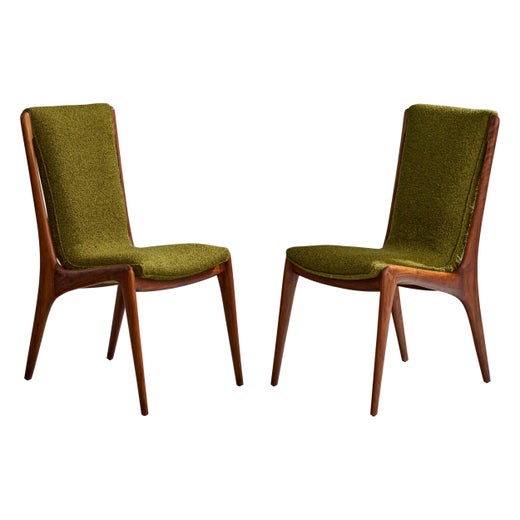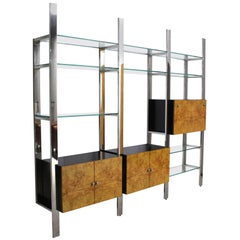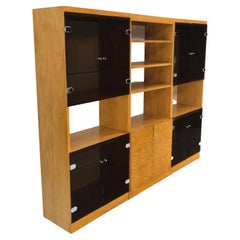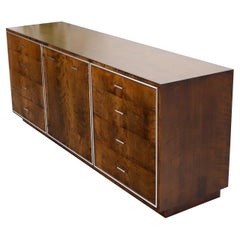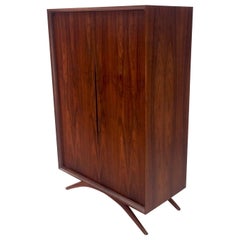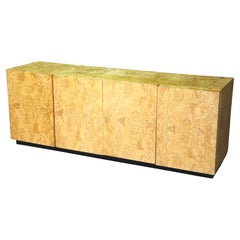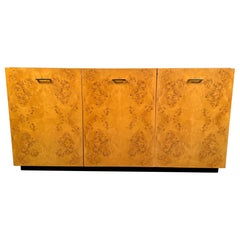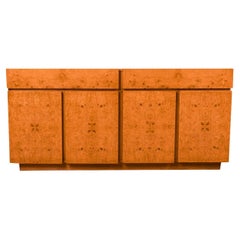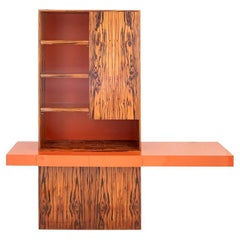Vladimir Kagan Burl Wood Wall Unit Cabinet Sideboard
About the Item
- Creator:Vladimir Kagan (Designer)
- Similar to:Milo Baughman (Designer)
- Dimensions:Height: 96 in (243.84 cm)Width: 108 in (274.32 cm)Depth: 20 in (50.8 cm)
- Style:Mid-Century Modern (Of the Period)
- Place of Origin:
- Period:
- Date of Manufacture:circa 1970s
- Condition:Wear consistent with age and use.
- Seller Location:Rockaway, NJ
- Reference Number:1stDibs: LU88375436353
Vladimir Kagan
The pioneers of modern furniture design in America in the mid-20th century all had their moments of flamboyance: Charles and Ray Eames produced the startling, biomorphic La Chaise; George Nelson’s firm created the Marshmallow sofa; Edward Wormley had his decadent Listen to Me chaise. But no designer of the day steadily offered works with more verve and dynamism than Vladimir Kagan. While others, it seems, designed with suburban households in mind, Kagan aimed to suit the tastes of young, sophisticated city-dwellers. With signature designs that feature sleekly curved frames and others that have dramatic out-thrust legs, Kagan made furniture sexy.
Kagan’s father was a Russian master cabinetmaker who took his family first to Germany (where Vladimir was born) and then to New York in 1938. After studying architecture at Columbia University, Kagan opened a design firm at age 22 and immediately made a splash with his long, low and sinuous Serpentine sofa. Furniture lines such as the Tri-symmetric group of glass-topped, three-legged tables and the vivacious Contours chairs soon followed.
Kagan’s choices of form and materials evolved through subsequent decades, embracing lucite, aluminum and burl-wood veneers. By the late 1960s, Kagan was designing austere, asymmetrical cabinets and his Omnibus group of modular sofas and chairs. For all his aesthetic élan, Kagan said that throughout his career, his touchstone was comfort. “A lot of modern furniture was not comfortable. And so comfort is: form follows function. The function was to make it comfortable,” he once commented. “I created what I called vessels for the human body.”
A diverse group of bodies have made themselves at home with Kagan designs. Among the famous names who commissioned and collected his designs are Marilyn Monroe, Gary Cooper, Andy Warhol, David Lynch, Angelina Jolie and Brad Pitt, and firms such as Gucci and Giorgio Armani. His work is in numerous museum collections, including those of the Victoria & Albert and the Metropolitan Museum of Art.
Because of its idiosyncrasy, Kagan’s work did not lend itself to mass-production. Kagan never signed on with any of the major furniture-making corporations, and examples of his designs are relatively rare. As you will see from the offerings on 1stDibs, even decades after their conception, Kagan pieces still command the eye, with their freshness, energy, sensuality and wit.
- ShippingRetrieving quote...Shipping from: Hardwick, NJ
- Return Policy
More From This Seller
View All20th Century American Mid-Century Modern Vitrines
Stainless Steel, Chrome
20th Century American Mid-Century Modern Cabinets
Smoked Glass, Burl
20th Century American Mid-Century Modern Credenzas
Chrome
20th Century American Mid-Century Modern Dressers
Walnut
20th Century American Mid-Century Modern Shelves
Brass
20th Century American Mid-Century Modern Commodes and Chests of Drawers
Walnut, Burl
You May Also Like
Mid-20th Century Mid-Century Modern Credenzas
Burl
Mid-20th Century Unknown Mid-Century Modern Sideboards
Metal
Vintage 1970s American Mid-Century Modern Sideboards
Burl
Vintage 1970s Mid-Century Modern Cabinets
Acrylic, Wood, Rosewood
Mid-20th Century Hollywood Regency Credenzas
Burl
Vintage 1980s Italian Mid-Century Modern Sideboards
Brass
Read More
Martyn Lawrence Bullard Welcomes You to the Hotel Californian
A Spanish Colonial Revival gem in the heart of Santa Barbara has been reborn as a luxurious new boutique hotel.
Rooms We Love: 11 Splendid Living Rooms
Common wisdom used to declare the kitchen the hub of the house. These days, the living room seems to have assumed the role of domestic focal point. Unlike the Victorian parlor, stiffly furnished and reserved for guests, today’s living room is a central place for reading, conversation and, well, living, with furnishings that lend themselves to both casual lounging and elegant entertaining.
